One day I simply decided to never use plastic cling wrap again. It was easy and I didn’t even need to buy anything new. I made the decision to eliminate plastic cling wrap from my life for environmental reasons, but now I also appreciate the health benefits. The way we store food also has an impact on how much we waste. These reusable alternatives really work and fulfil all my needs. I would never encourage anything that resulted in more food waste.
Plates on top of plates
Placing a plate over a bowl or unfinished meal is a quick and effective way of protecting food in the fridge. You already own plates and bowls, and most people have more than they need, so you will be putting them to good use. If you have plates that fit well together, you also have the option of stacking them to make the most of your space. And it’s a cinch to reheat leftovers.
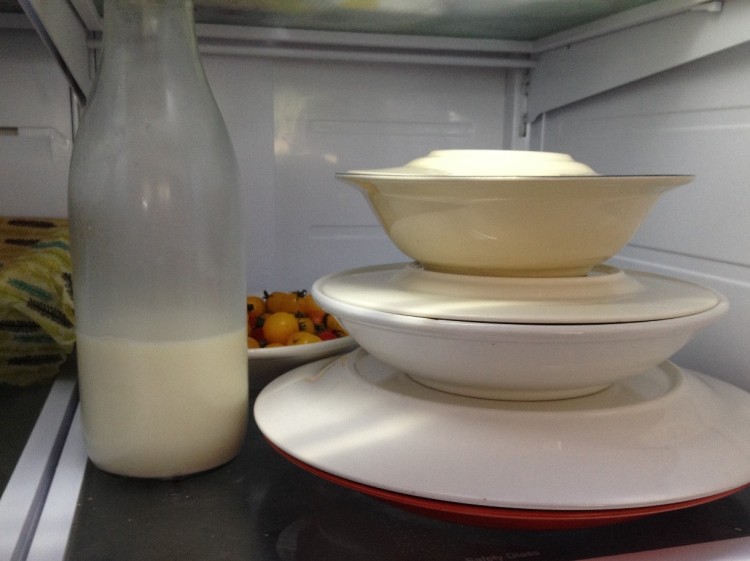
Containers and jars
Containers get a lot more use in my house now. How many of you have a ‘Tupperware drawer’ of containers that you rarely use? I didn’t have a lot of plastic containers as I’ve always preferred the look of glass, but now everything gets used for storing food, from cheese to leftovers and salad leaves. Reused glass jars also come in very handy for food storage. Stainless steel containers are another light-weight option but clear containers and jars allow you to see what food you have. Again you can stack containers to use space effectively. Pyrex containers are great in that you can cook, freeze, and reheat food in the same container.
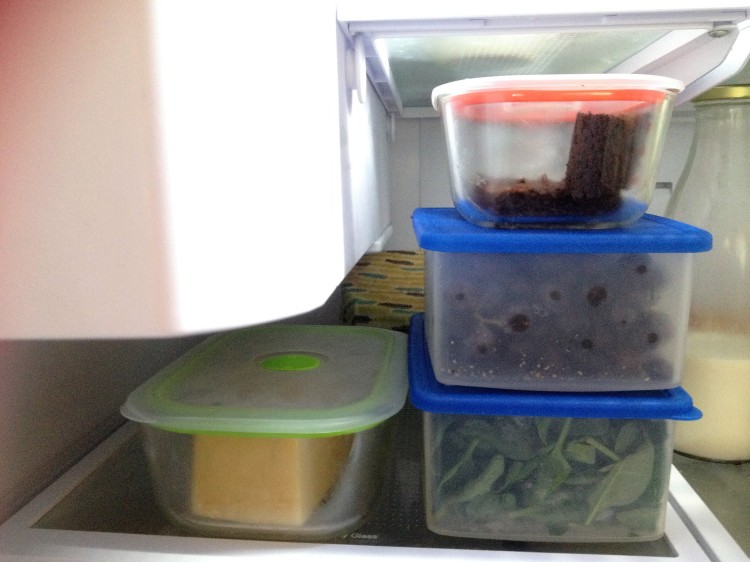
Tea towels and cloth wraps
Tea towels and other cloth wraps come in handy for vegetables, ham, and dough, or if you don’t want to use a plate over a bowl. Many people dampen the cloth before wrapping the food. I also use cloth napkins to wrap sandwiches sometimes.
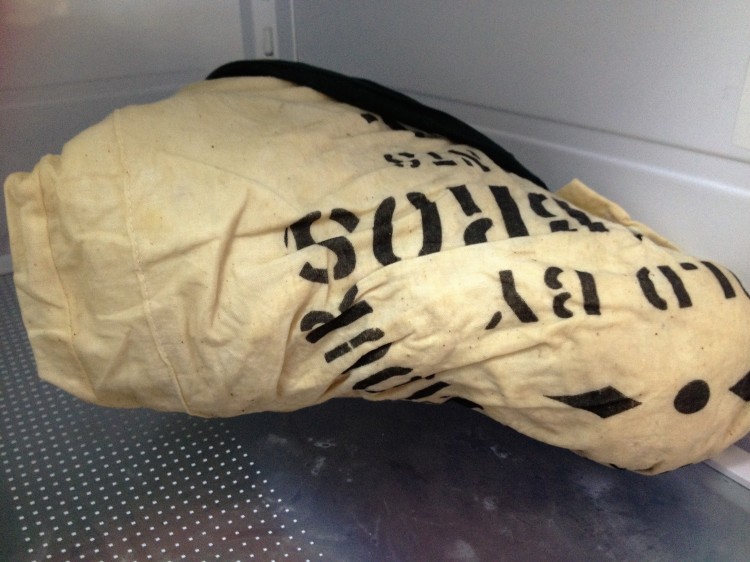

Beeswax wraps
Beeswax wraps are made from fabric coated in beeswax (and sometimes other ingredients) which can be moulded with the warmth of your hands around an object. I made my own beeswax wraps by melting beeswax onto cotton fabric cut from old clothing using this tutorial. I was then given some HoneyBee Wraps so I was able to compare them. They both work well. They will last for one year and are biodegradable at the end of their life. I find beeswax wraps are not essential in my kitchen but they do come in handy when I have run out of containers for lunch boxes or cut fruit like watermelon.
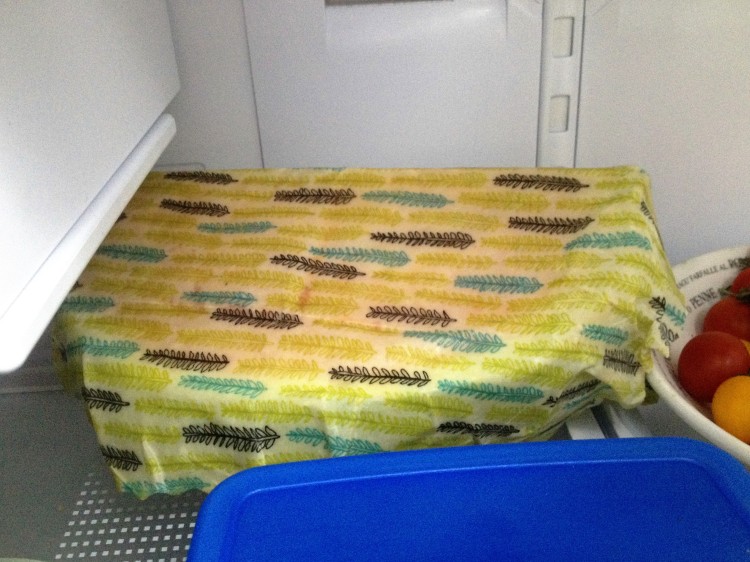
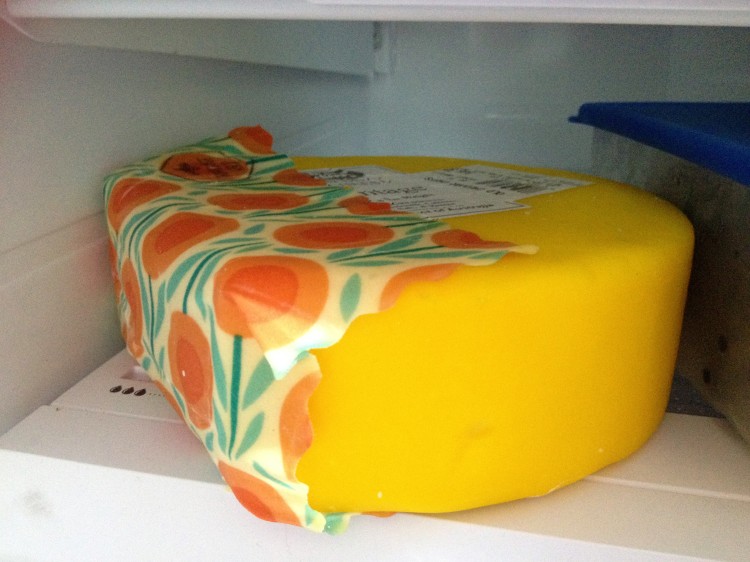
Silicone lids
My mum got me on to this Lilypad silicone lid which seals airtight on all smooth rimmed stainless steel, wood, glass, plastic and ceramic containers. She found them in a local homewares store but you can get them online here too. I find it is a good option for parties or other outdoor eating situations. Its microwave safe so it can go on top of bowls for steaming and reheating food. It can even go on pots and pans to retain heat or contain splatters while cooking. Again not essential if you are happy to use your existing containers, tea towels, and plates, but handy to have if you don’t mind the purchase.
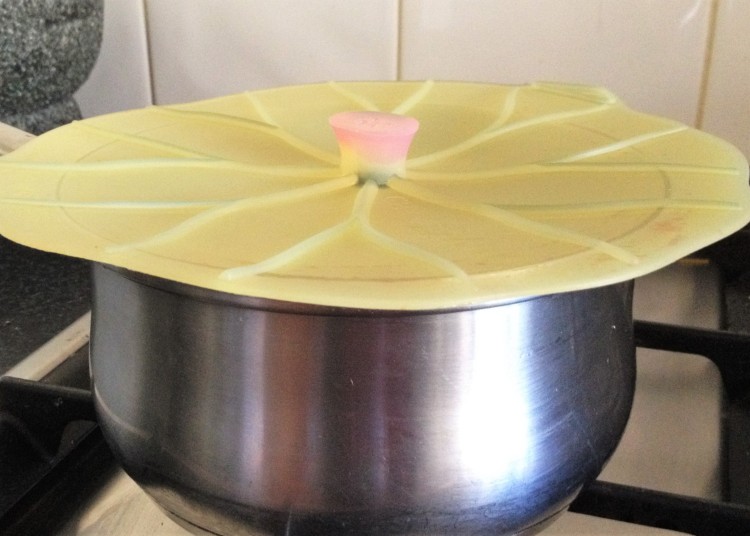
‘Shower cap’ food covers
These ‘shower cap’ food covers are also great for outdoor eating situations or to cover bowls of salad in the fridge. They are quick and easy to use being a more secure option than tea towels, beeswax wraps, and plates. They wash easily and are biodegradable at the end of their life. You could make you own ones of these too.
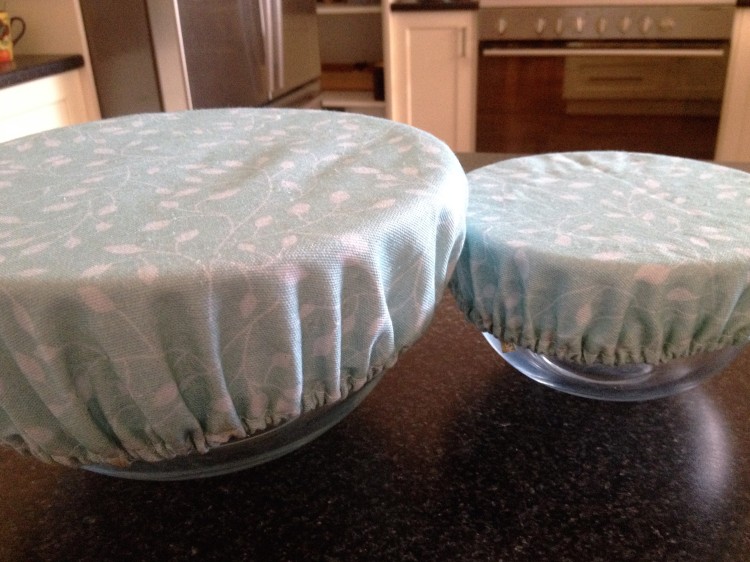
Silicone sheets
Agreena 3 in 1 Wraps are made from silicone and are a replacement for cling wrap as well as baking paper and aluminium foil. That appealed to me because it’s good to have another multi use product in the kitchen to give me more options and flexibility (without having a lot of things). The transparent material also allows you to see what is wrapped in the sheet so you don’t forget what it is and leave it untouched at the back of the fridge for months.

Pockets
I don’t have any of these pockets but they might interest you for sandwiches, loose snacks and slices of cheese, quiche and so on. I am on the look out for a plastic free and biodegradable version.
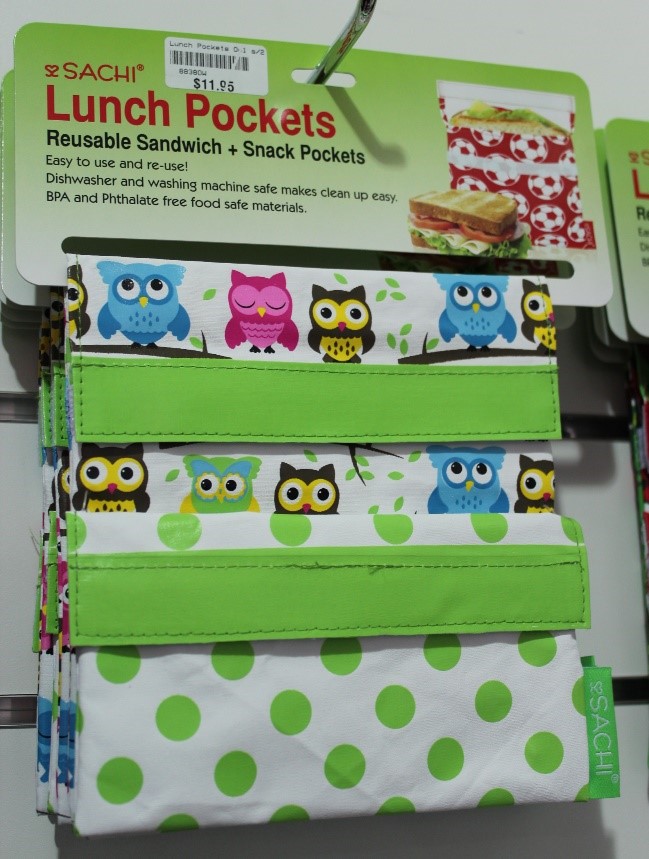
So there you have some really easy solutions for eliminating plastic cling wrap from your household. I have not encountered any situation where I have needed to use plastic cling wrap so I am interested to know if you think there are times when it is necessary. Let me know! In any case, use the alternatives as your first choice as much as possible.
This post contains affiliate links. Please refer to my disclosure statement for more information.

A great variety of suggestions – I haven’t seen those silicone lids before
LikeLiked by 1 person
I wasn’t into them when my mum first showed me, but I think they are good now. So easy to plonk on top of a bowl or pot and then wipe clean.
LikeLiked by 1 person
Cling wrap was one of the first things to go for me, years ago. That stuff isn’t cheap and for it to just be thrown away not long after! This is a really good list! I am always surprised when I see people storing their leftovers in their fridge with cling wrap
LikeLiked by 1 person
I know, it seems mind-boggling now to think how much people rely on it when it’s so easy to live without it!
LikeLike
I have a roll of cling wrap in the drawer that must be ancient! The only thing I ever used it for was for when cheesemaking to do final wrap on brie cheese I made while it was maturing. Now that I’m planning on getting back into making cheese I’ll have to come up with a better option. Love the silicon lids and I def must explore beeswax wraps more. I found somewhere how to make them and it wasn’t too arduous! Great post, I’m using this for my weekly school newsletter Greenspace tip 🙂
LikeLiked by 1 person
That’s great. Cheese making is something I’d like to learn and I was wondering about the packaging involved and things like cling wrap. We’ll have to keep in touch about alternatives we find.
LikeLiked by 1 person
Hi Tammy, I watched a restaurant cover their bowls of items to store at the end of service one night and was astounded at the amount of cling wrap used! I suppose some of this comes back to no financial skin in the game as well as convenience and environmental ignorance.
Just a concern with the term “biodegradable” in your article. There seems to be great confusion in the community with the use of this word, resulting mainly from it being printed on plastic bags that also contain a plant ingredient eg. potato starch, oil seed etc. that enable the plastic to break down into pieces. While this means animals won’t choke on a large piece of plastic, it does mean there are lots of little pieces of plastic in the environment that are difficult to deal with and might be an issue for smaller creatures! Many people – including the shopkeepers using them – seem to think that the term “biodegradable” on these bags equates with “compostable” and they therefore won’t damage the environment. This is understandable if one looks at the synonyms for “biodegradable”, but it is certainly being used by some manufacturers as “green wash” for their items and confusing the marketplace/consumer.
LikeLiked by 2 people
Thank you for this, Nola! I’m aware of the problem of green washing but you may be right, I may have fallen for it too. Are you referring to the 4MyEarth Food Covers? I couldn’t find anything more than it being described as a biodegradable coating on cotton/canvas, so I assumed it was compostable.
I think this is a topic I should cover in depth at some stage.
If there are other topics/issues you think should be addressed, feel free to email me. I want to make sure people have the best information.
LikeLiked by 1 person
Not to mention the toxic outgassing! That’s a whole new conversation.
LikeLike